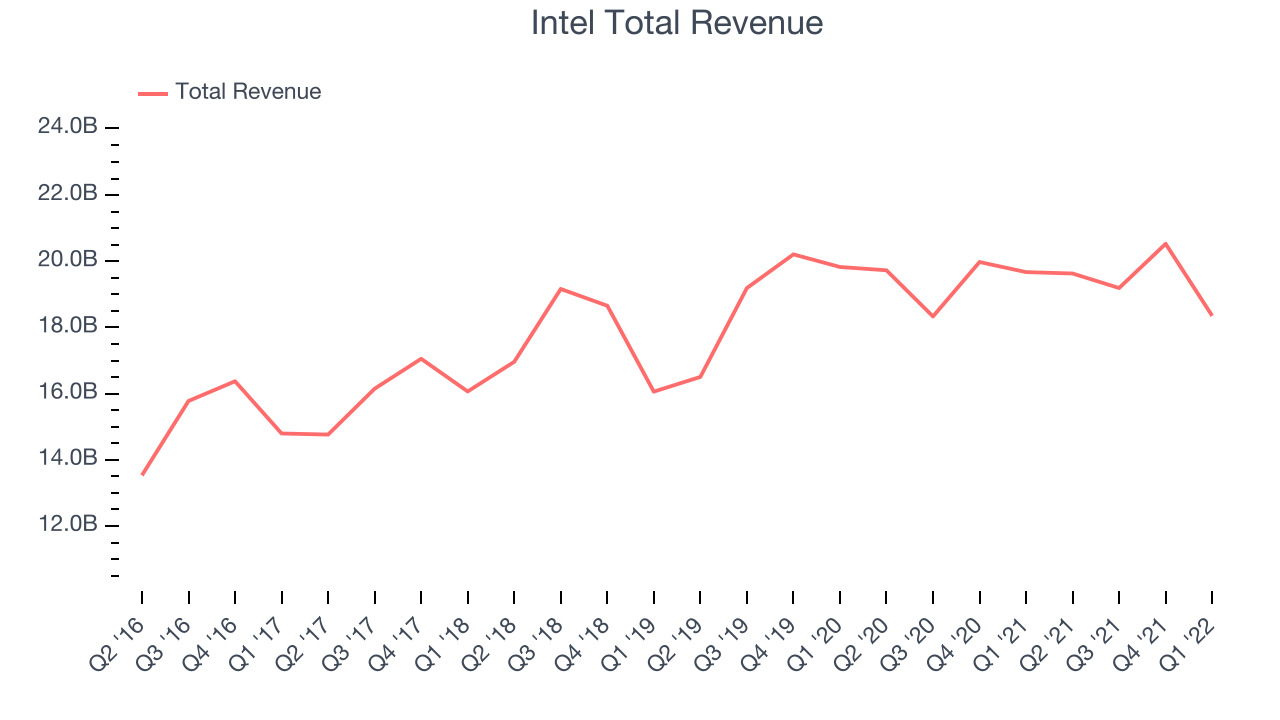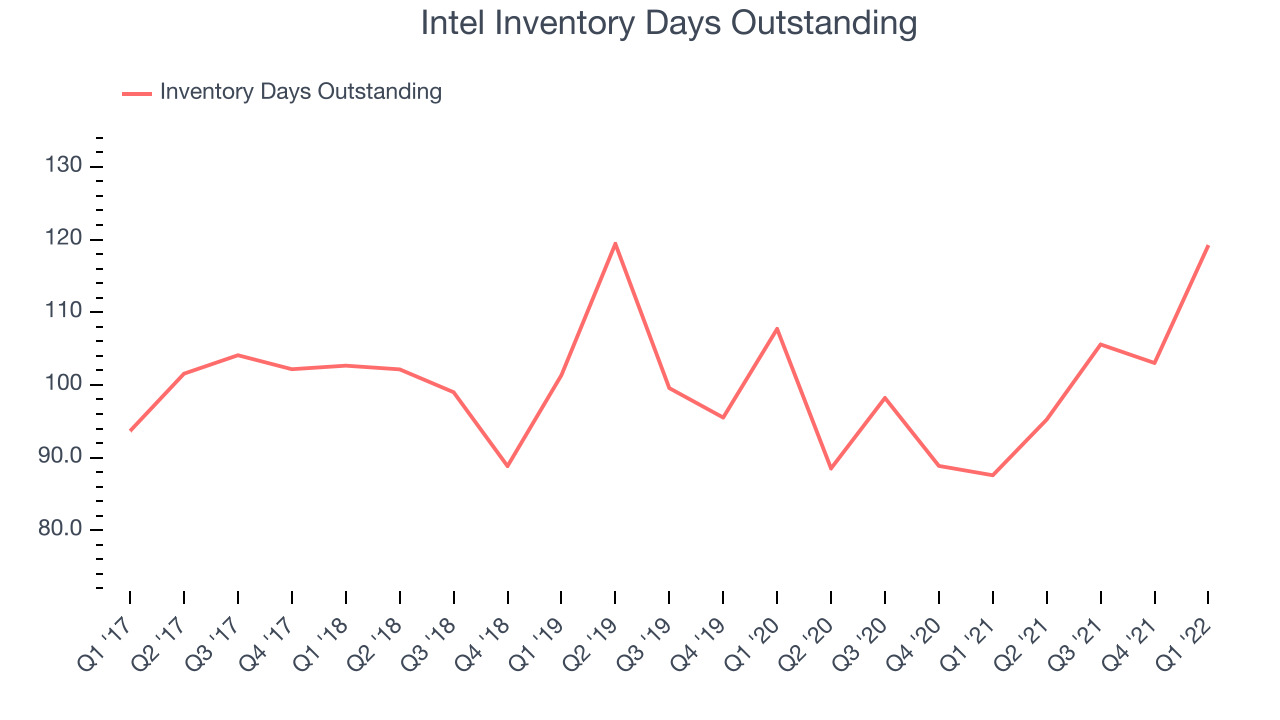Computer processor maker Intel (NASDAQ:INTC) reported results in line with analyst expectations in Q1 FY2022 quarter, with revenue down 6.7% year on year to $18.3 billion. Guidance for the full year also exceeded estimates, however the guidance for the next quarter was less impressive, coming in at $18 billion, 2.93% below analyst estimates. Intel made a GAAP profit of $8.11 billion, improving on its profit of $3.36 billion, in the same quarter last year.
Is now the time to buy Intel? Access our full analysis of the earnings results here, it's free.
Intel (INTC) Q1 FY2022 Highlights:
- Revenue: $18.3 billion vs analyst estimates of $18.3 billion (small beat)
- EPS (non-GAAP): $0.87 vs analyst estimates of $0.79 (9.58% beat)
- Revenue guidance for Q2 2022 is $18 billion at the midpoint, below analyst estimates of $18.5 billion
- Inventory Days Outstanding: 119, up from 103 previous quarter
- Gross Margin (GAAP): 50.3%, down from 55.1% same quarter last year
Inventor of the x86 processor that powered decades of technological innovation in PCs, data centers, and numerous other markets, Intel (NASDAQ: INTC) is the leading manufacturer of computer processors and graphics chips.
The biggest demand drivers for processors (CPUs) and graphics chips at the moment are secular trends related to 5G and Internet of Things, autonomous driving, and high performance computing in the data center space, specifically around AI and machine learning. Like all semiconductor companies, digital chip makers exhibit a degree of cyclicality, driven by supply and demand imbalances and exposure to PC and Smartphone product cycles.
Sales Growth
Intel's revenue growth over the last three years has been unimpressive, averaging 3.54% annually. Last year the quarterly revenue declined from $19.6 billion to $18.3 billion. Semiconductors are a cyclical industry and long-term investors should be prepared for periods of high growth, followed by periods of revenue contractions (which can sometimes offer opportune times to buy).

Despite Intel revenues beating analyst estimates, this was still a slow quarter with just 6.71% revenue growth. Intel's growth turned to declines this quarter, signal that the current downcycle is deepening.
Revenue growth went from positive to negative this quarter, and Intel expects it to stay negative next quarter with an estimated decline of 8.31% YoY and analysts think the declines will continue, with next twelve months estimated at 2.18% declines.
There are others doing even better than Intel. Founded by ex-Google engineers, a small company making software for banks has been growing revenue 90% year on year and is already up more than 150% since the IPO last December. You can find it on our platform for free.
Product Demand & Outstanding Inventory
Days Inventory Outstanding (DIO) are an important metric for chipmakers, as it reflects the capital intensity of the business and the cyclical nature of semiconductor supply and demand. In a tight supply environment, inventories tend to be stable, allowing chipmakers to exert pricing power. Steadily increasing DIO can be a warning sign that demand is weak, and if inventories continue to rise the company may have to downsize production.

This quarter, Intel’s inventory days came in at 119, 19 days above the five year average, suggesting that that inventory has grown to higher levels than what we used to see in the past.
Key Takeaways from Intel's Q1 Results
With a market capitalization of $184 billion, more than $38.6 billion in cash and with free cash flow over the last twelve months being positive, the company is in a very strong position to invest in growth.
We were impressed by how strongly Intel outperformed analysts’ earnings expectations this quarter. That feature of these results really stood out as a positive. On the other hand, it was less good to see that the revenue growth was quite weak and the revenue guidance for the next quarter missed analysts' expectations. Overall, this quarter's results were not the best we've seen from Intel. The company is down 4.11% on the results and currently trades at $44.92 per share.
Intel may have had a tough quarter, but does that actually create an opportunity to invest right now? It is important that you take into account its valuation and business qualities, as well as what happened in the latest quarter. We look at that in our actionable report which you can read here, it's free.
One way to find opportunities in the market is to watch for generational shifts in the economy. Almost every company is slowly finding itself becoming a technology company and facing cybersecurity risks and as a result, the demand for cloud-native cybersecurity is skyrocketing. This company is leading a massive technological shift in the industry and with revenue growth of 70% year on year and best-in-class SaaS metrics it should definitely be on your radar.
The author has no position in any of the stocks mentioned.
